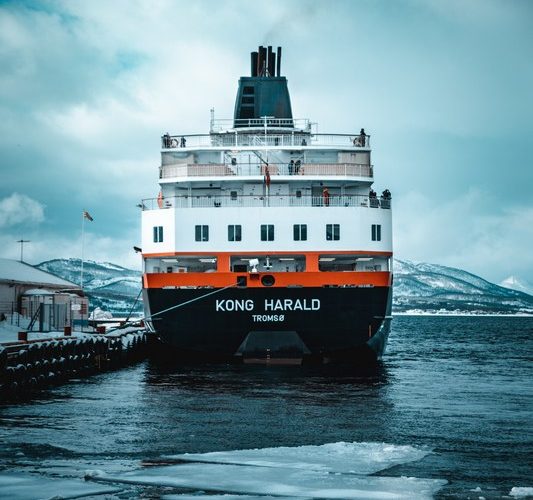The tax office came to the conclusion that services relating to securing, lifting and towing etc. of a wrecked ship is covered by the term «salvage of vessels» in the Value Added Tax Act § 6-9. It is irrelevant to the exemption that the seller of the service waives the right to salvage pay, as long as he was entitled to salvage pay pursuant to the provision in section 445 of the Maritime Act.
We refer to your letter of 14 February 2019 and subsequent telephone discussion on the matter. You request an advisory statement regarding the tax exemption in the Value Added Tax Act § 6-9 third paragraph. More specifically, you would like to know whether the tax exemption applies in connection with (…) (hereinafter the company) delivery of services to (…) in connection with the salvage of (…) (hereinafter …).
Fact
In the request, you have presented facts that are summarized below.
(…) collided with (…) contacted the company with a request for assistance to rescue (…).
On November 8, 2018, a contract was entered into between the parties via e-mail. The final agreement was entered into on 21 November 2018, where the agreement of 8 November 2018 was entered into.
The company mobilized the relevant vessels and equipment immediately and arrived at the accident site (…).
Before the company arrived, the original plan was to secure (…) as quickly as possible to prevent it from sinking, but due to location it was not possible to get to. It was then decided to push (…) with the ship side towards land using tugboats. (…) was subsequently lying with the ship’s side towards some boulders, and tilted sharply but the bow sank lower in the sea. Attempts were made to secure (…) with wires, so that it would not slip out into deeper water. The wires smoked after five days and (…) sank to approx. 30 meters depth. The company was not involved in this work.
The company’s task consisted of raising (…) and transporting it to the agreed place of delivery. From the start of the operation, the company also had the task of securing (…) in a stable position, 24-hour guard, providing lighting in the dark and ensuring that unauthorized personnel get on board (…). Furthermore, the company was to revise and update the salvage plan etc. to the extent necessary. In connection with the transport, the company was to obtain all necessary permits and carry out all necessary securing of loose objects at sea.
With regard to the scope of the work, reference is also made to the request for the advisory opinion.
(…) was delivered at the agreed delivery place on (…).
(…) has focused on saving as much value as possible. (…) shall make a thorough survey of the condition of (…) to make an assessment of (…) future fate. It is thus uncertain whether (…) will sail again.
The parties have agreed that the company has the right to invoice (…) for its services. In this connection, it has been agreed that the company waives the right to salvage pay. The following is stated in the agreement:
“The Contractor confirms that neither it nor its servants, agents or sub-contractors shall under any circumstances whatsoever make any claim for slavage and / or Special Compensation whatsoever regarding the Services, including but not limited to under the Salvage Convention Article 14 or the Norwegian Maritime Code. “
The company’s assessment
It is claimed that the turnover in connection with the assignment related to the salvage of (…) is covered by the exemption in the Value Added Tax Act § 6-9 third paragraph and that the company can therefore invoice (…) at zero rate.
You state that the company only uses vessels during the salvage operation, including barges / submersible barges, support vessels, lifting vessels, etc. and that the condition “services from vessels” must therefore be considered fulfilled.
You further state that the services provided shall be considered “salvage services” and that the conditions in § 6-9 third paragraph are therefore met. In this connection, you emphasize that (…) is “accident and in danger”, cf. the Maritime Act § 441 first paragraph letter a. (…) could slip further into the fjord at greater depths and thus be applied further injuries in addition to that (…) and approx. 150 tons of diesel. The potential for damage was therefore large. This both in relation to the risk of further physical damage to (…) and equipment, risk of environmental damage, (…) etc.
The fact that the company according to the contract can not demand salvage pay is of no significance for the services to be characterized as salvage. The agreed fee is the salvage salary in this case.
All services have a close and natural connection with the salvage assignment and the entire turnover is therefore covered by the exemption.
Our assessment
Regulations
In accordance with the Value Added Tax Act § 3-1 first paragraph, value added tax shall be calculated on sales of goods and services. However, certain types of turnover are exempt from the Act, ie the VAT rate is 0%, cf. the VAT Act § 1-3 first paragraph letter h.
According to the Value Added Tax Act § 6-9 third paragraph, a fee with a zero rate shall be calculated when services are provided by vessels in the form of salvage of vessels. The law or regulations do not specify what is meant by salvage of vessels.
It follows from the Maritime Act § 441 that salvage is defined as any action that has the purpose of providing assistance to ships or objects that have been involved in an accident or are in danger in any waters.
Section 445 of the Maritime Act stipulates that the salvor is only entitled to salvage pay if the salvage has led to a useful result. The salvage must thus have an economic value. Salvage pay, without the addition of interest and legal costs, can never be set higher than the salvage value.
Assessment
theme The assessment theme in this case is therefore whether the exemption for salvage is applied in connection with the company’s delivery of services to (…) in connection with salvage of off (…).
Assessment The
Value Added Tax Act § 6-9 third paragraph sets out two conditions for the exemption to apply. First, the services must be delivered from vessels. Secondly, the services must be classified as salvage services.
The provision is exempt from VAT salvage services from all types of vessels, not only from specially built or specially equipped salvage or rescue vessels, cf. , support vessels, lifting vessels. Provided that these ships / vessels are registered as ships, it is assumed that the condition that the services are delivered from vessels is met.
In relation to the question of salvage services, a limit must be drawn against assistance, which is not covered by the exemption in § 6-9 third paragraph. The question of whether there is tax-free salvage must be decided taking into account the specific circumstances in each case, including the danger to which the salvaged vessel, its passengers or cargo has been exposed, cf. the Directorate of Taxes’ Report, Av no. With regard to the question of danger, it has been stated that the raising of a sunken vessel is notoriously considered salvage.
In the directorate’s report, cf. above, it is further stated that a significant criterion for whether there is salvage will be whether salvage pay is paid.
As we see it, there is no doubt that the services of securing, lifting and towing can be classified as salvage. This also applies to the work of guarding, preparation and updating of the salvage plan, the acquisition of all necessary permits and the execution of the necessary securing of loose objects in the sea. The services related to guarding and updating the salvage plan as well as the acquisition of all necessary permits are – as we understand the fact – necessary to be able to carry out the assignment. In relation to securing loose objects in the sea, we refer to section 441 of the Maritime Act, which states that the salvage rules are not limited to the vessel itself, but that the salvage rules also include goods on board or something that has belonged to the ship / vessel.
The services are therefore immediately covered by the provision of § 6-9 third paragraph. The crucial point, however, is whether the fact that the company in connection with the contract with (…) has waived the right to salvage pay means that the services can nevertheless not be considered salvage in the tax law sense.
Section 445 of the Maritime Act stipulates that the salvor is only entitled to salvage pay if the salvage has led to a useful result. The salvage must thus have an economic value. Salvage pay, without the addition of interest and legal costs, can never be set higher than the salvage value.
According to the presented fact, we assume that there is no doubt that the company would be entitled to salvage pay, cf. section 445 of the Maritime Act. In this connection, it is irrelevant whether the parties consider the assignment to be salvage.
In our opinion, the fact that the company has waived its right to salvage pay is irrelevant. The decisive factor must be whether the company is entitled to salvage pay, ie whether the services can be defined as salvage, including whether the salvage has led to a useful result. It is assumed that the agreed fee does not exceed the salvage value.
***
With the above conditions, we thus agree that the company’s turnover in connection with the
assignment related to (…) is covered by the exemption in § 6-9 third paragraph.
Source: skatteetaten.no















